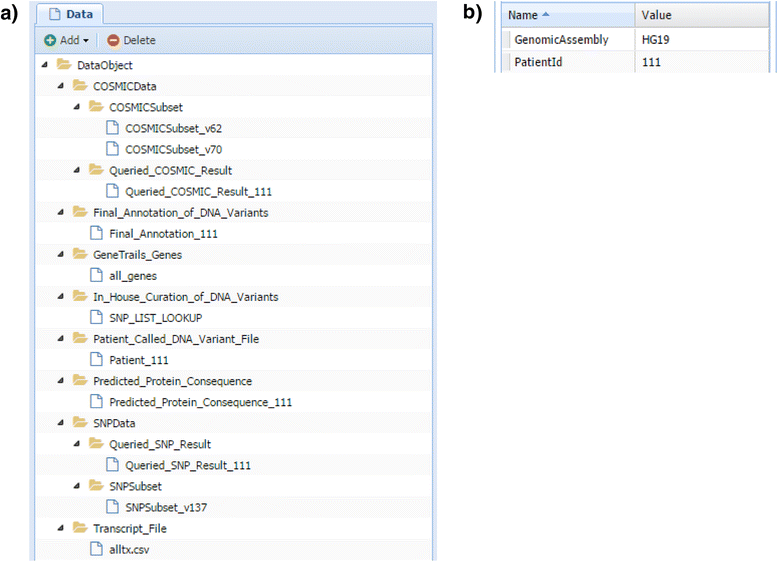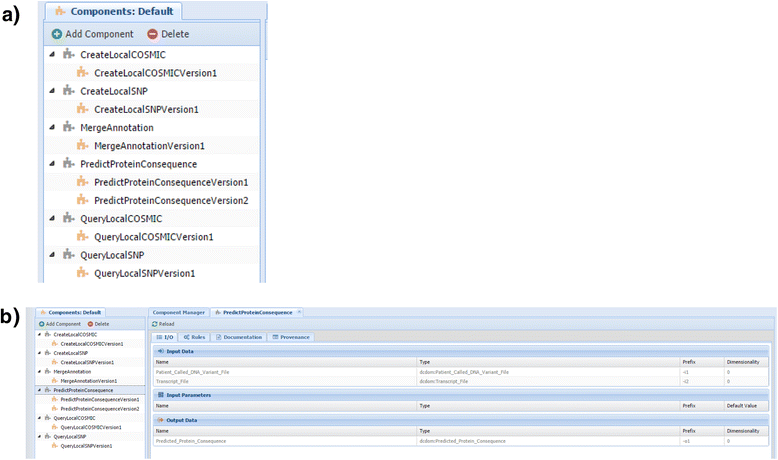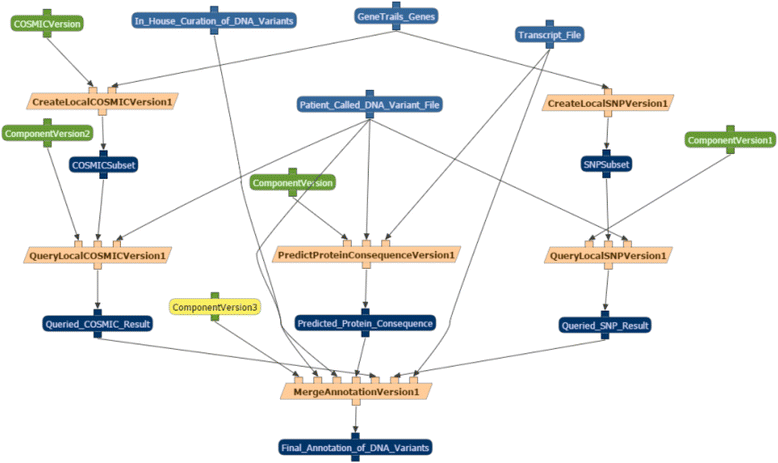Use of semantic workflows to enhance transparency and reproducibility in clinical omics
- PMID: 26289940
- PMCID: PMC4545705
- DOI: 10.1186/s13073-015-0202-y
Use of semantic workflows to enhance transparency and reproducibility in clinical omics
Abstract
Background: Recent highly publicized cases of premature patient assignment into clinical trials, resulting from non-reproducible omics analyses, have prompted many to call for a more thorough examination of translational omics and highlighted the critical need for transparency and reproducibility to ensure patient safety. The use of workflow platforms such as Galaxy and Taverna have greatly enhanced the use, transparency and reproducibility of omics analysis pipelines in the research domain and would be an invaluable tool in a clinical setting. However, the use of these workflow platforms requires deep domain expertise that, particularly within the multi-disciplinary fields of translational and clinical omics, may not always be present in a clinical setting. This lack of domain expertise may put patient safety at risk and make these workflow platforms difficult to operationalize in a clinical setting. In contrast, semantic workflows are a different class of workflow platform where resultant workflow runs are transparent, reproducible, and semantically validated. Through semantic enforcement of all datasets, analyses and user-defined rules/constraints, users are guided through each workflow run, enhancing analytical validity and patient safety.
Methods: To evaluate the effectiveness of semantic workflows within translational and clinical omics, we have implemented a clinical omics pipeline for annotating DNA sequence variants identified through next generation sequencing using the Workflow Instance Generation and Specialization (WINGS) semantic workflow platform.
Results: We found that the implementation and execution of our clinical omics pipeline in a semantic workflow helped us to meet the requirements for enhanced transparency, reproducibility and analytical validity recommended for clinical omics. We further found that many features of the WINGS platform were particularly primed to help support the critical needs of clinical omics analyses.
Conclusions: This is the first implementation and execution of a clinical omics pipeline using semantic workflows. Evaluation of this implementation provides guidance for their use in both translational and clinical settings.
Figures




Similar articles
-
Semantic workflows for benchmark challenges: Enhancing comparability, reusability and reproducibility.Pac Symp Biocomput. 2019;24:208-219. Pac Symp Biocomput. 2019. PMID: 30864323 Free PMC article.
-
Investigating reproducibility and tracking provenance - A genomic workflow case study.BMC Bioinformatics. 2017 Jul 12;18(1):337. doi: 10.1186/s12859-017-1747-0. BMC Bioinformatics. 2017. PMID: 28701218 Free PMC article.
-
Tavaxy: integrating Taverna and Galaxy workflows with cloud computing support.BMC Bioinformatics. 2012 May 4;13:77. doi: 10.1186/1471-2105-13-77. BMC Bioinformatics. 2012. PMID: 22559942 Free PMC article.
-
Reproducible, scalable, and shareable analysis pipelines with bioinformatics workflow managers.Nat Methods. 2021 Oct;18(10):1161-1168. doi: 10.1038/s41592-021-01254-9. Epub 2021 Sep 23. Nat Methods. 2021. PMID: 34556866 Review.
-
Scientific workflow managers in metabolomics: an overview.Analyst. 2020 Jun 7;145(11):3801-3808. doi: 10.1039/d0an00272k. Epub 2020 May 6. Analyst. 2020. PMID: 32374793 Review.
Cited by
-
An Automated Workflow Composition System for Liquid Chromatography-Mass Spectrometry Metabolomics Data Processing.J Am Soc Mass Spectrom. 2023 Dec 6;34(12):2857-2863. doi: 10.1021/jasms.3c00248. Epub 2023 Oct 24. J Am Soc Mass Spectrom. 2023. PMID: 37874901 Free PMC article.
-
Recent Progress and Future Direction for the Application of Multiomics Data in Clinical Liver Transplantation.J Clin Transl Hepatol. 2022 Apr 28;10(2):363-373. doi: 10.14218/JCTH.2021.00219. Epub 2022 Jan 4. J Clin Transl Hepatol. 2022. PMID: 35528975 Free PMC article. Review.
-
Semantic workflows for benchmark challenges: Enhancing comparability, reusability and reproducibility.Pac Symp Biocomput. 2019;24:208-219. Pac Symp Biocomput. 2019. PMID: 30864323 Free PMC article.
-
Investigating reproducibility and tracking provenance - A genomic workflow case study.BMC Bioinformatics. 2017 Jul 12;18(1):337. doi: 10.1186/s12859-017-1747-0. BMC Bioinformatics. 2017. PMID: 28701218 Free PMC article.
-
Big Data in Gastroenterology Research.Int J Mol Sci. 2023 Jan 27;24(3):2458. doi: 10.3390/ijms24032458. Int J Mol Sci. 2023. PMID: 36768780 Free PMC article. Review.
References
-
- Ellis MJ, Perou CM. The genomic landscape of breast cancer as a therapeutic roadmap. Cancer Discov. 2013;3:27–34. doi: 10.1158/2159-8290.CD-12-0462. - DOI - PMC - PubMed
Publication types
MeSH terms
Grants and funding
LinkOut - more resources
Full Text Sources
Other Literature Sources
Miscellaneous

